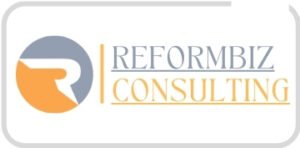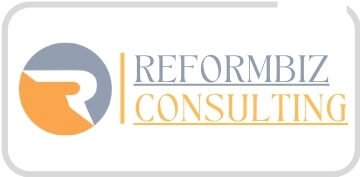In the fast-paced world of modern business, organizations constantly strive for operational excellence, improved performance, and strategic growth. One key area often overlooked is Human Resources (HR). HR is a critical component that influences productivity, employee satisfaction, compliance, and overall business success. That’s where an HR audit comes in—a comprehensive evaluation of HR processes and practices that helps ensure your organization’s human resources are aligned with its goals and compliant with relevant regulations. But what exactly is an HR audit, and why is it essential for your business? Let’s explore the concept, its benefits, and the key steps to conducting an effective HR audit. What is an HR Audit? An HR audit is a systematic review of an organization’s human resource policies, practices, procedures, and strategies to ensure they are compliant with regulations, aligned with business goals, and operating efficiently. Think of it as a “health check” for your HR function. HR audits typically involve assessing various aspects such as recruitment, training, compensation, benefits, performance management, legal compliance, and employee relations. By identifying gaps or inefficiencies, an HR audit provides valuable insights that help HR teams make informed decisions and enhance overall organizational performance. Why is an HR Audit Important? An HR audit offers multiple benefits for organizations of all sizes and industries. Some of the most important reasons to conduct an HR audit include: 1. Ensuring Legal Compliance Laws and regulations governing employment practices are constantly evolving. From labor laws to anti-discrimination statutes, HR teams must stay up-to-date with changes to avoid legal issues or penalties. An HR audit helps identify compliance risks and ensures that the organization is adhering to federal, state, and local regulations. 2. Identifying Gaps in HR Processes An HR audit evaluates whether existing HR processes are effective. It identifies inefficiencies or areas where the organization might be missing opportunities to enhance productivity, improve employee engagement, or reduce costs. A robust HR audit can help pinpoint these issues and propose actionable solutions. 3. Improving Employee Experience HR plays a central role in shaping the employee experience. From recruitment and onboarding to career development and performance management, HR impacts employee engagement, retention, and satisfaction. Through the audit process, organizations can assess whether HR practices are meeting employee needs and fostering a positive workplace culture. 4. Optimizing HR Strategy and Alignment An HR audit allows organizations to assess whether their HR strategy is aligned with overall business objectives. By reviewing key HR metrics such as turnover rates, employee engagement, and training effectiveness, HR leaders can ensure that human capital strategies are in sync with the organization’s long-term vision. 5. Cost Control and Budgeting HR audits often uncover areas where organizations are spending unnecessarily or could improve efficiency. For instance, by streamlining recruitment or benefits administration, companies can reduce costs and allocate resources more effectively. Audits also provide valuable data to help HR leaders make data-driven decisions about budgeting and resource allocation. Key Areas to Audit in HR The HR audit process typically covers several key areas of human resources. Here are the core areas organizations should focus on during an HR audit: 1. Recruitment and Staffing This area involves reviewing hiring processes, job descriptions, and recruitment strategies. An audit will evaluate whether recruitment practices align with the company’s diversity and inclusion goals, whether job descriptions are accurate, and if the hiring process complies with legal standards. Key questions to consider: 2. Employee Benefits and Compensation Compensation and benefits are critical factors for attracting and retaining top talent. An audit of this area ensures that your compensation packages are competitive, equitable, and compliant with relevant laws such as minimum wage or overtime requirements. Key questions to consider: 3. Training and Development Training programs are vital for employee growth and organizational success. An HR audit assesses whether training and development initiatives are aligned with business goals, if employees are receiving adequate opportunities to grow, and whether training programs are effective in improving performance. Key questions to consider: 4. Performance Management This area includes evaluating performance appraisal systems, goal-setting processes, and feedback mechanisms. A well-designed performance management system is crucial for improving productivity, increasing engagement, and fostering a culture of accountability. Key questions to consider: 5. Employee Relations and Engagement Employee relations focus on fostering positive relationships between the organization and its employees. The audit will look at policies around workplace behavior, grievance handling, conflict resolution, and overall employee morale. Employee engagement surveys and feedback mechanisms are also part of this evaluation. Key questions to consider: 6. Compliance and Legal Issues Compliance with labor laws, workplace safety regulations, and other legal requirements is critical for avoiding costly fines or legal disputes. An audit will assess whether the company has the necessary documentation (such as employee handbooks, contracts, and policies) and whether it complies with applicable laws, including discrimination laws, workplace safety regulations, and more. Key questions to consider: 7. Health and Safety Ensuring a safe work environment is essential for both legal compliance and employee wellbeing. An HR audit should assess whether the company has adequate health and safety policies in place and whether it meets occupational health and safety standards. Key questions to consider: Steps to Conduct an HR Audit Now that we understand what an HR audit is and why it’s important, let’s look at how to conduct one. Step 1: Define the Scope of the Audit Decide which areas of HR you want to audit. A full audit will examine every aspect of HR operations, but you may choose to focus on specific areas based on business needs or concerns. Step 2: Collect and Review Data Gather relevant data such as employee records, performance appraisals, recruitment reports, compensation data, and compliance documentation. Review existing policies and practices to identify any discrepancies or areas for improvement. Step 3: Conduct Interviews and Surveys Engage with key stakeholders within HR and other departments to gain insights into current practices. Conduct employee surveys or focus groups to gather feedback on employee satisfaction, engagement, and HR effectiveness. Step 4: Analyze Findings Evaluate the data collected and compare it against industry best practices, legal requirements, and



